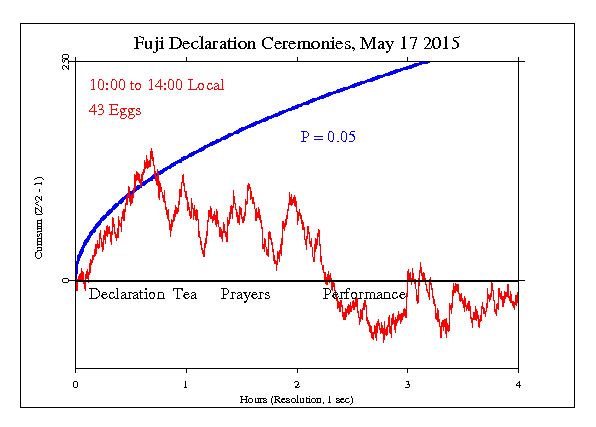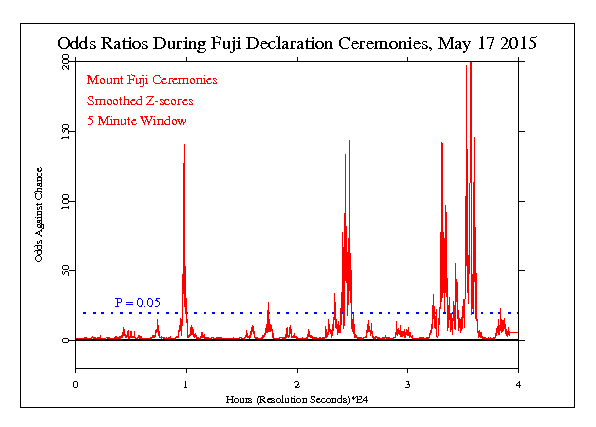Fuji Declaration
This event looks at a four hour period during which thousands of people in Japan at the Fuji Sanctuary near Mount Fuji, and simultaneously in Copenhagen Denmark gathered to announce and define the Fuji Declaration. The following is its introductory text.
Awakening The Divine Spark In The Spirit Of Humanity
For a Civilization of Oneness with Diversity on Planet Earth
A new phase in the evolution of human civilization is on the horizon. With deepening states of crisis bringing unrest to all parts of the world, there is a growing need for change in our ways of thinking and acting. We now have the choice of either spiraling into deepening peril, or breaking through to a world of dignity and wellbeing for all.
Throughout its history, humanity has been guided primarily by a material consciousness. Fearing scarcity, we have continued to pursue material gain beyond necessity, taking from others and depleting the Earth’s natural resources. If our aspirations continue to focus only on what is material and finite, our world will face inevitable destruction. .... Full text: Fuji Declaration
Specific Hypothesis and Results
The formal GCP event was set for four hours beginning at 01:00 UTC, which corresponds to 10:00 am in Tokyo/Fuji. There was, however, an earlier part of the ceremony near sunrise in Fuji and sunset in Copenhagen, Denmark, where a sister celebration of the Declaration was happening. The result for the formal study was Chisquare 14381 on 14400 df, for p = 0.543 and Z = -0.108. The graphs below show, in addition, some explorations of the actual introduction of the Fuji Declaration and a different analysis procedure examining the raw Z-scores, which produces "spikes" when there is strong correlation.
Interpretation
The following graph is a visual display of the statistical result. It shows the second-by-second accumulation of small deviations of the data from what’s expected. Our prediction is that deviations will tend to be positive, and if this is so, the jagged line will tend to go upward. If the endpoint is positive, this is evidence for the general hypothesis and adds to the bottom line. If the endpoint is outside the smooth curve showing 0.05 probability, the deviation is nominally significant. If the trend of the cumulative deviation is downward, this is evidence against the hypothesis, and is subtracted from the bottom line. For more detail on how to interpret the results, see The Science and related pages, as well as the standard caveat below.

Next we see a one-hour segment of the data recorded during the
introduction of the Fuji Declaration, followed by the formal tea
ceremony. It shows a largely positive trend.

Finally we look at the raw Z-scores presented in the form of odds
ratios which indicate the likelihood of the data being from a random
distribution. There are several instances of unlikely (odds less than 100 to
1) clusters of scores.

Standard caveat
It is important to keep in mind that we have only a tiny statistical effect, so that it is always hard to distinguish signal from noise. This means that every success
might be largely driven by chance, and every null
might include a real signal overwhelmed by noise. In the long run, a real effect can be identified only by patiently accumulating replications of similar analyses.
